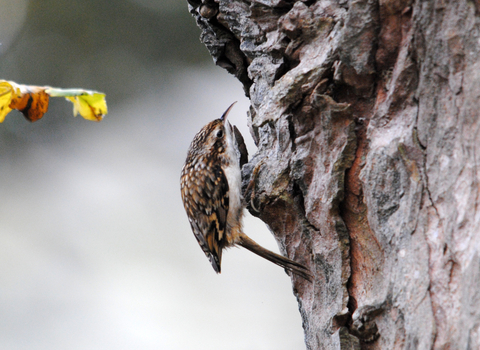
©Amy Lewis
Treecreeper
The fine, downcurved bill of the treecreeper makes this tit-sized bird unmistakeable. Look out for it in woodlands and parks, literally 'creeping' around tree trunks.
Scientific name
Certhia familiarisWhen to see
January to DecemberSpecies information
Statistics
Length: 12-13cmWingspan: 19cm
Weight: 10g
Average lifespan: 2 years
Classified in the UK as Green under the Birds of Conservation Concern 5: the Red List for Birds (2021).
Habitats
About
A slim, tit-sized bird, the treecreeper has a long, pointed tail and a fine, downwards-curved bill. Treecreepers climb up trees in a spiral around the trunk, feeding on insects and spiders that they find in crevices in the bark. They have long, curved toes that help them cling to the bark, and really stiff tail feathers that they can push against the tree for extra support.They are residents in the UK, leaving their breeding territories in autumn, but usually going no further than a few kilometres. In autumn and winter, treecreepers often join flocks of tits, roaming woodlands and parks for food.
How to identify
The treecreeper is white below and mottled brown above, helping it camouflage against the bark of trees. It has a white eyestripe and a long, downcurved bill.Distribution
Widespread.Did you know?
Treecreepers always climb upwards on a trunk, often spiraling around the tree as they go. When they reach the top, they fly to the bottom of a new tree and start again. It's thought this could be an adaptation to save energy, as flying from a high point to a low point takes less effort than level flight.Watch
Treecreeper (https://vimeo.com/453698944)
Treecreeper by Tom Hibbert
